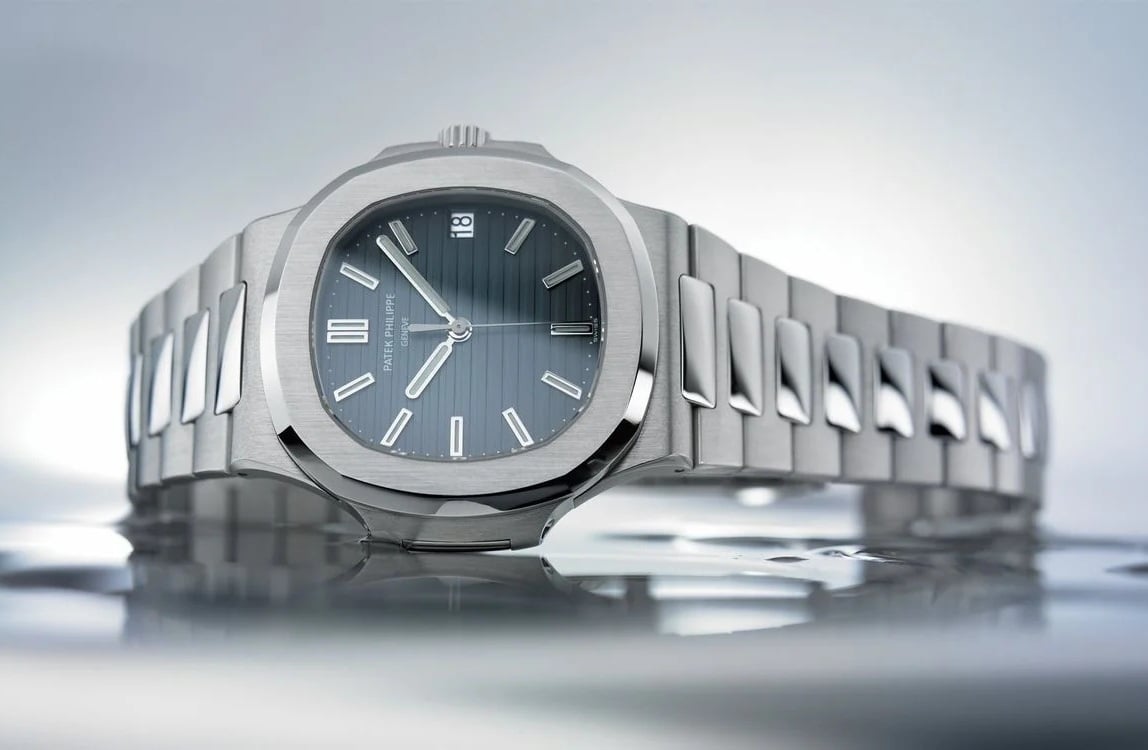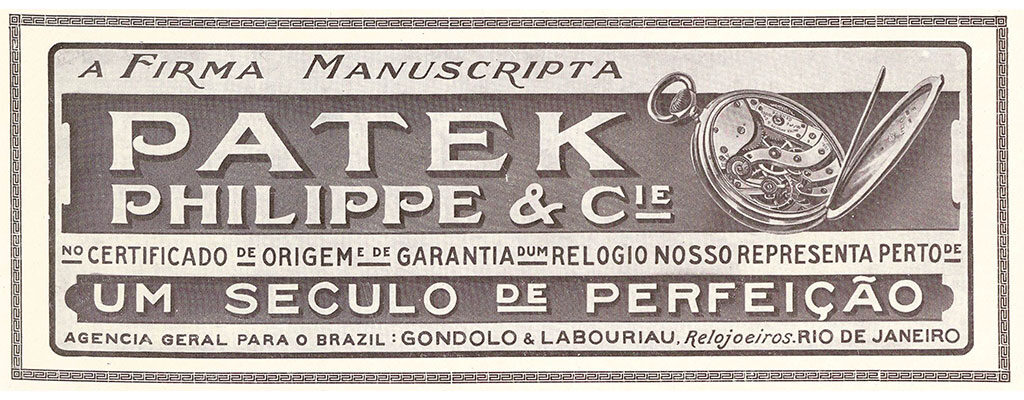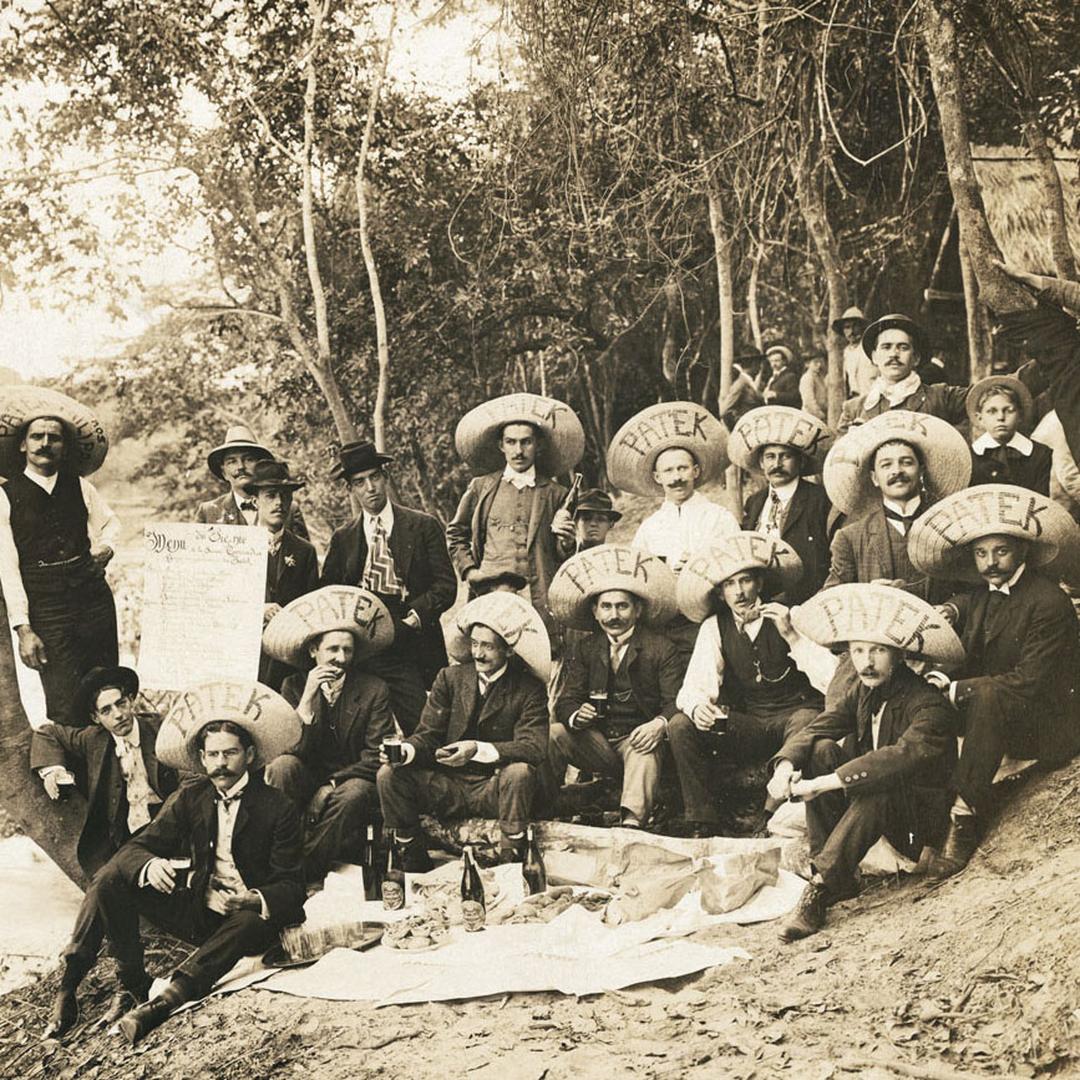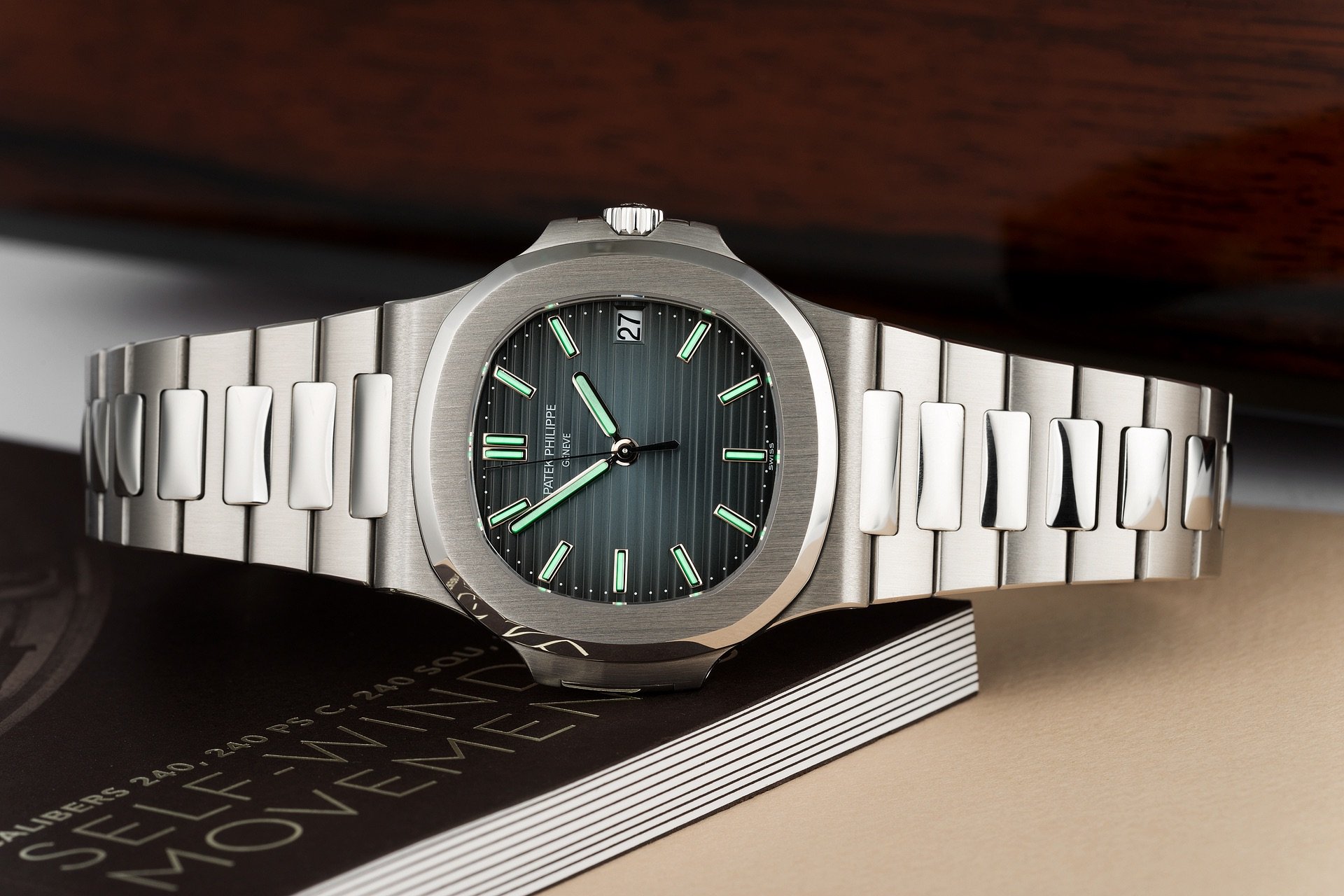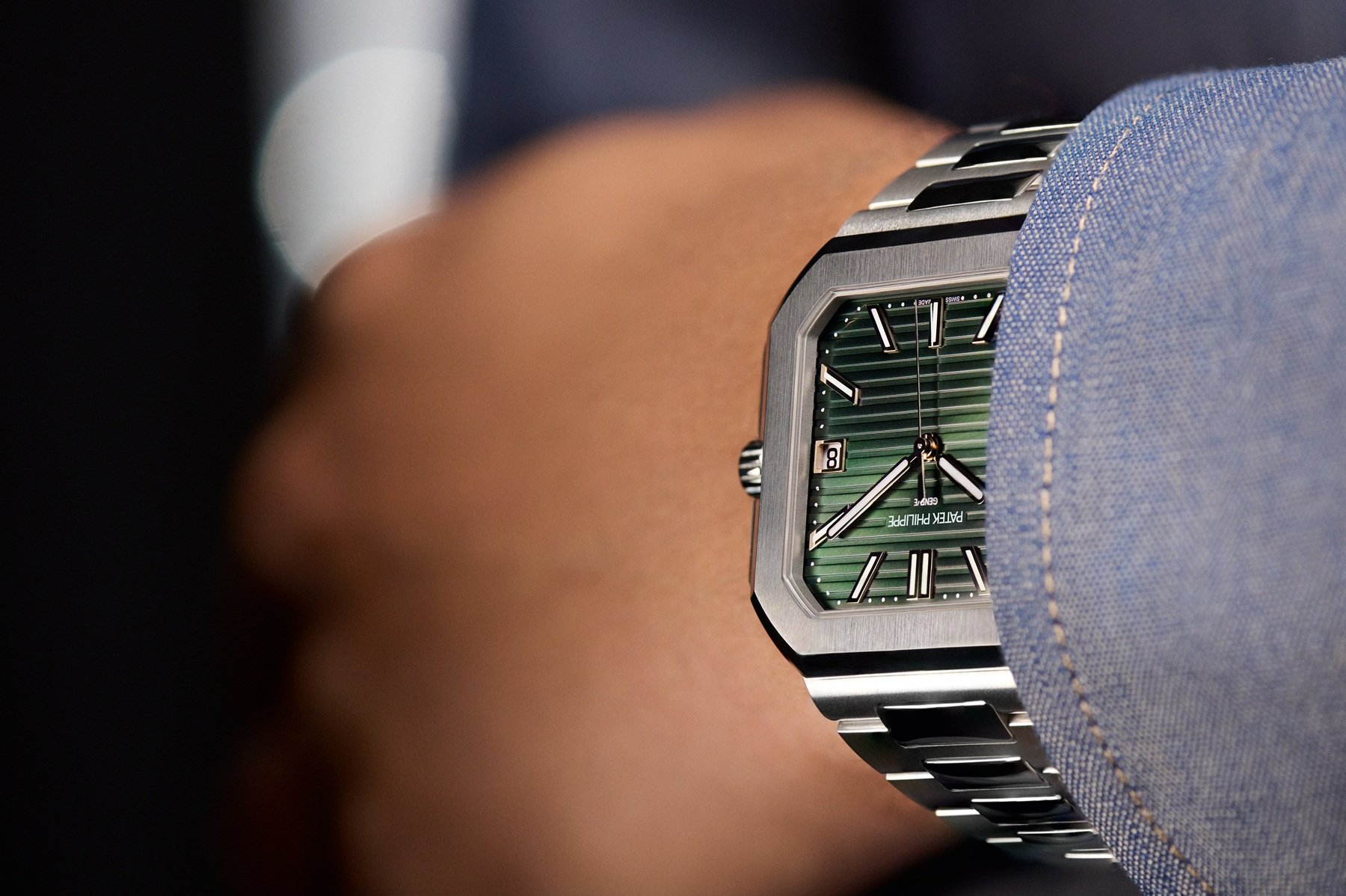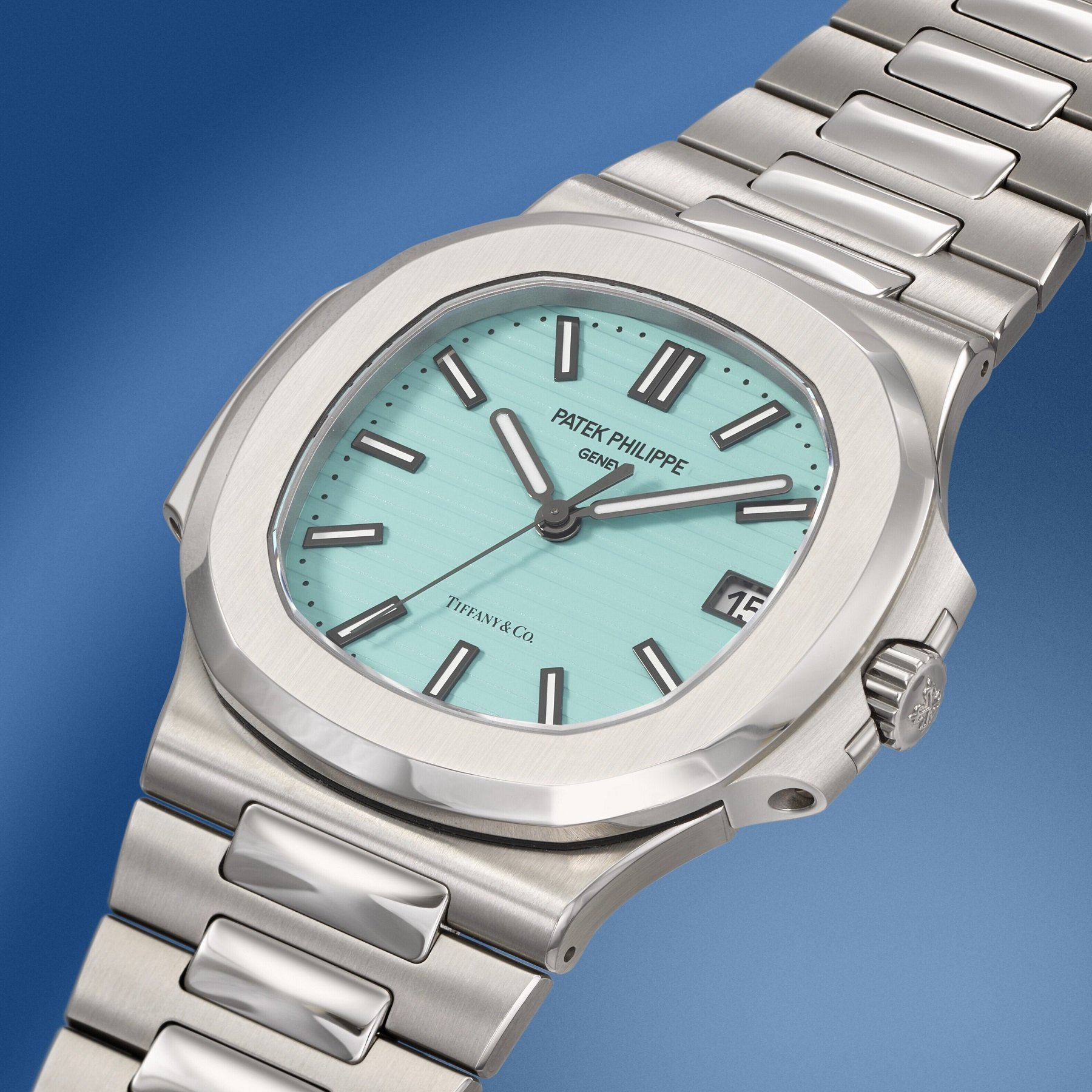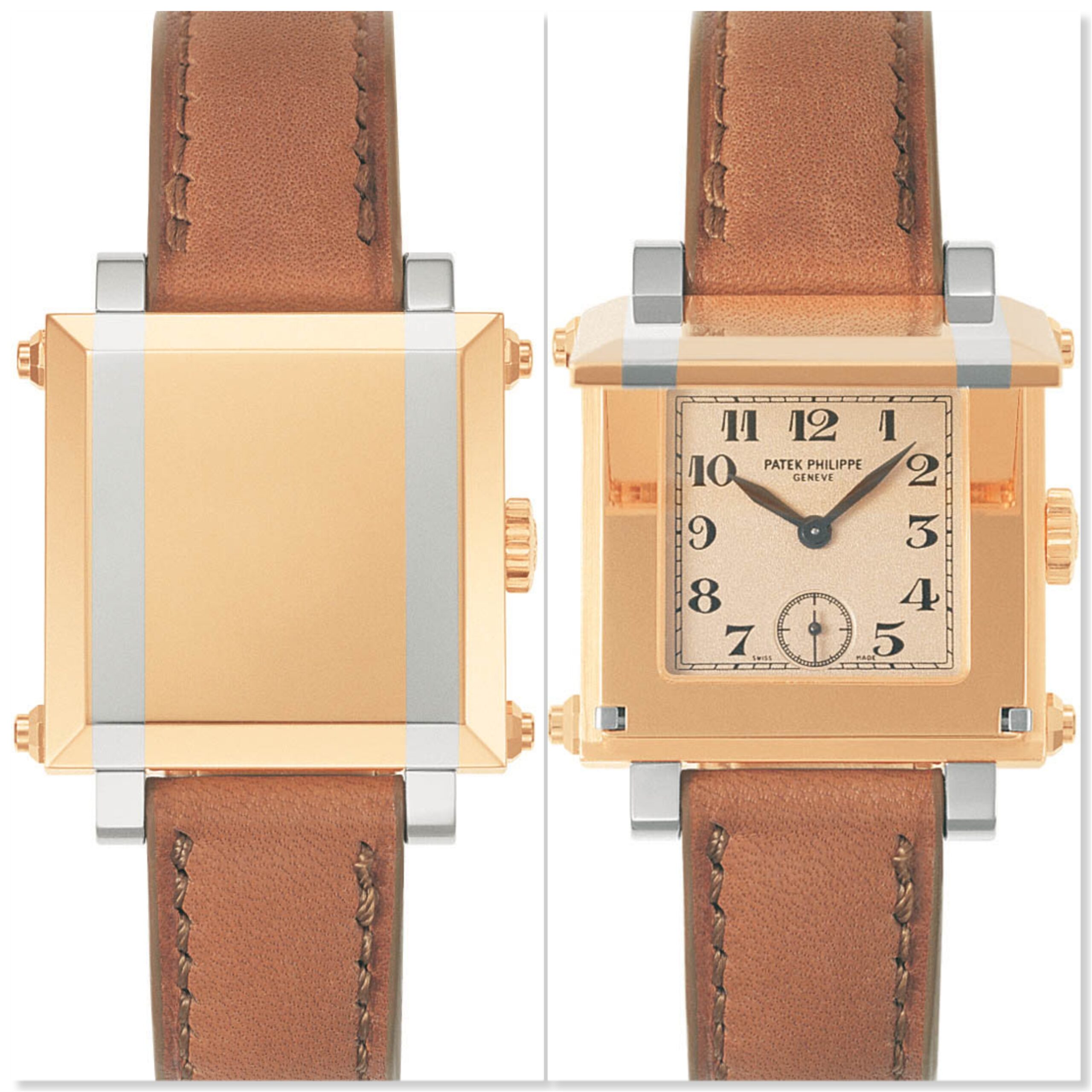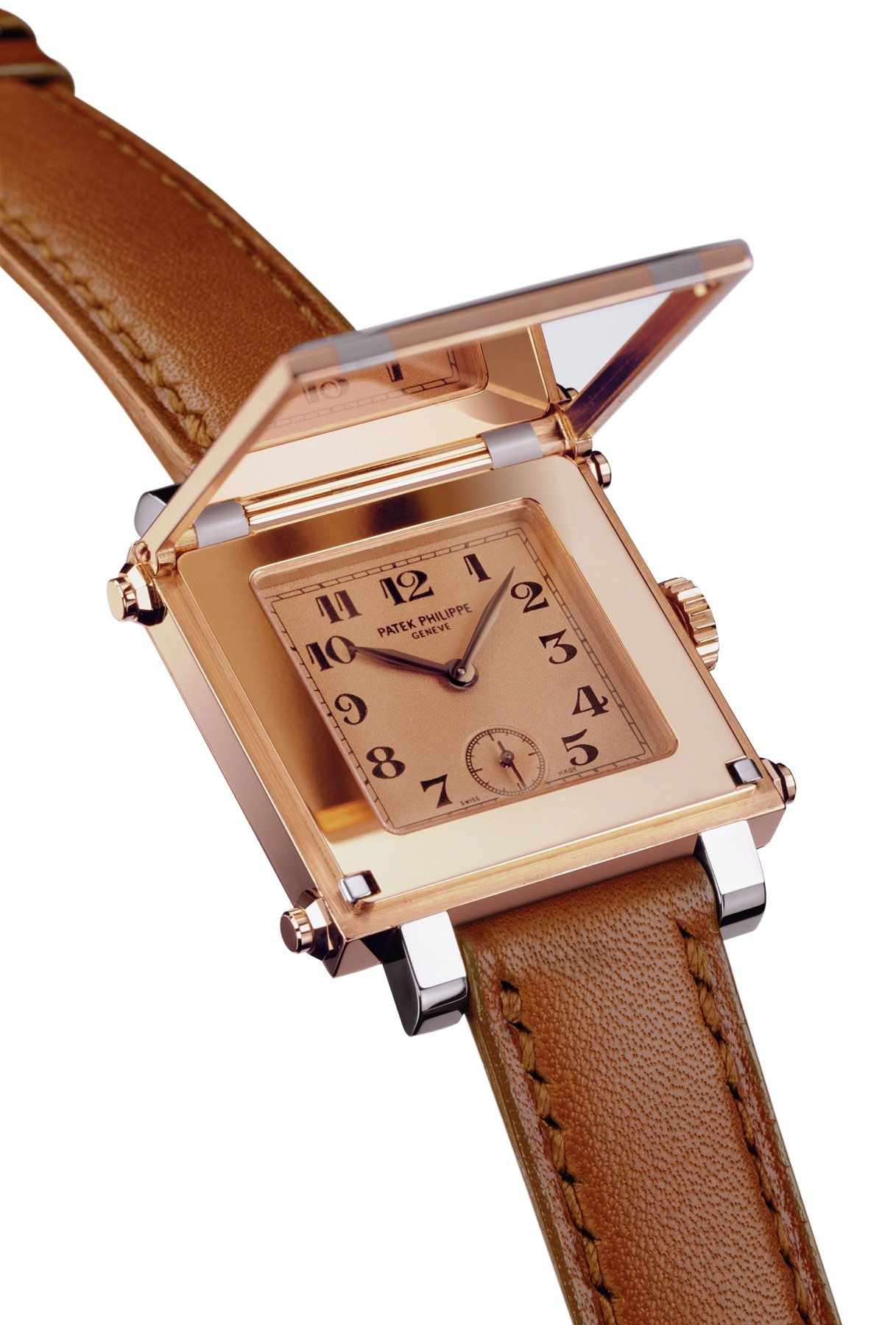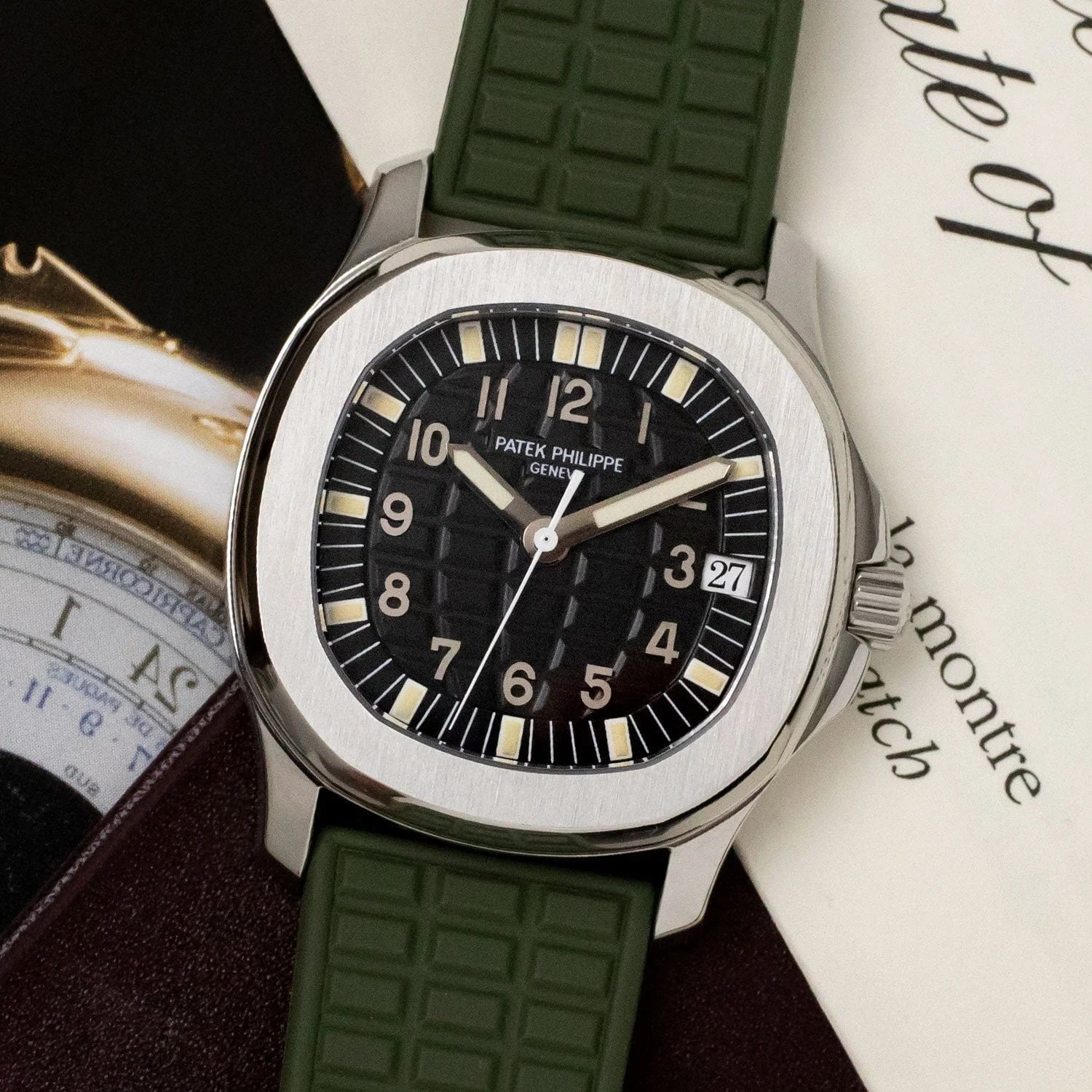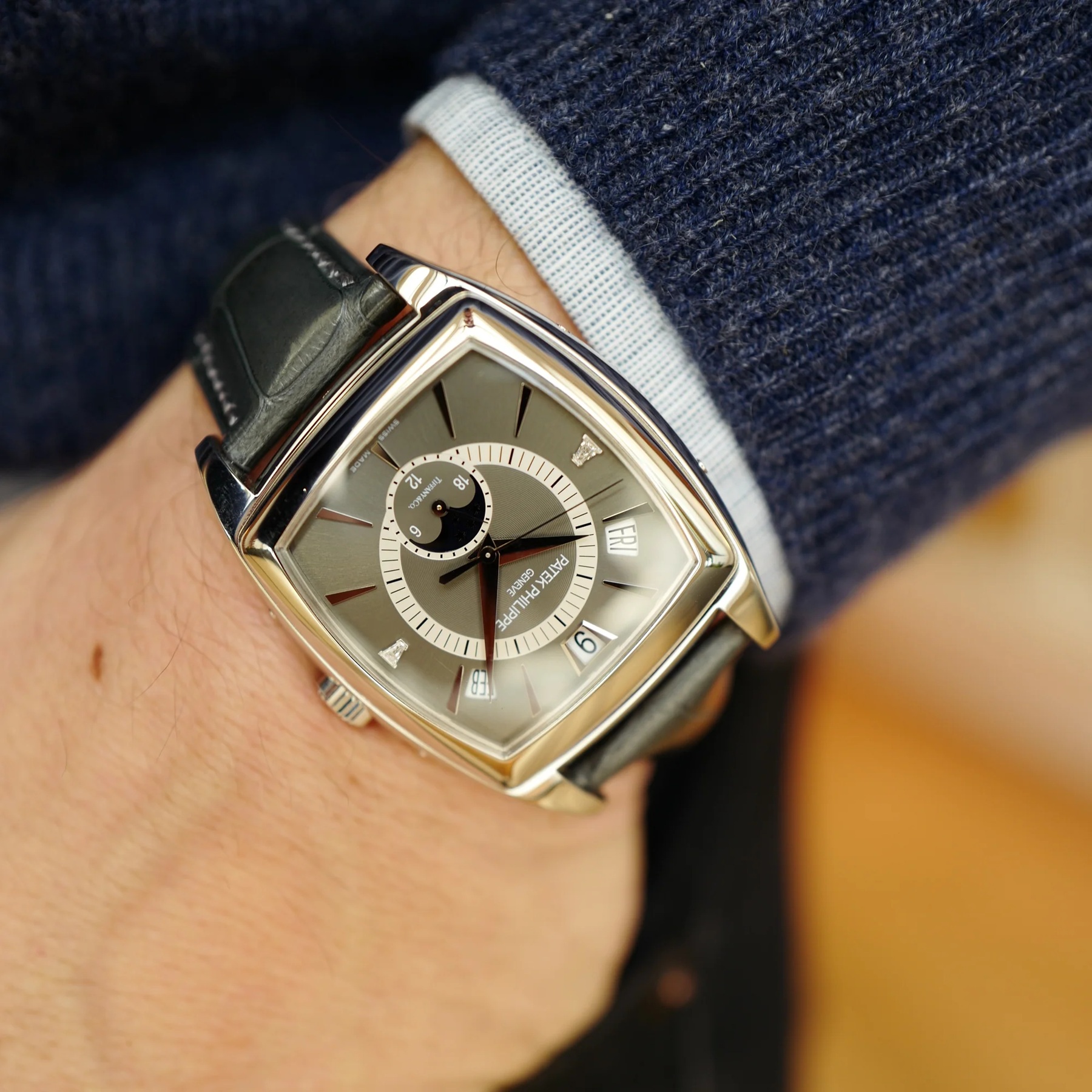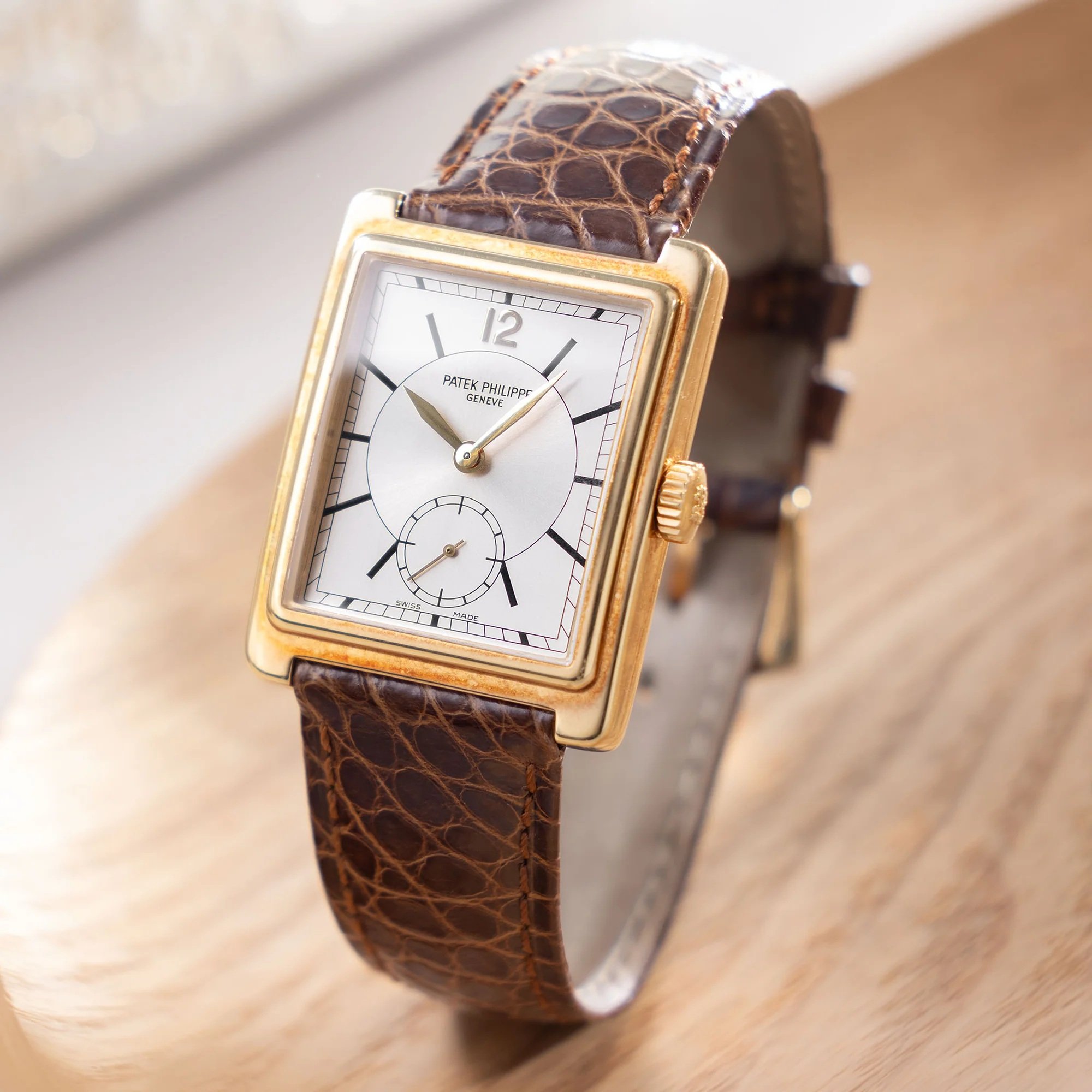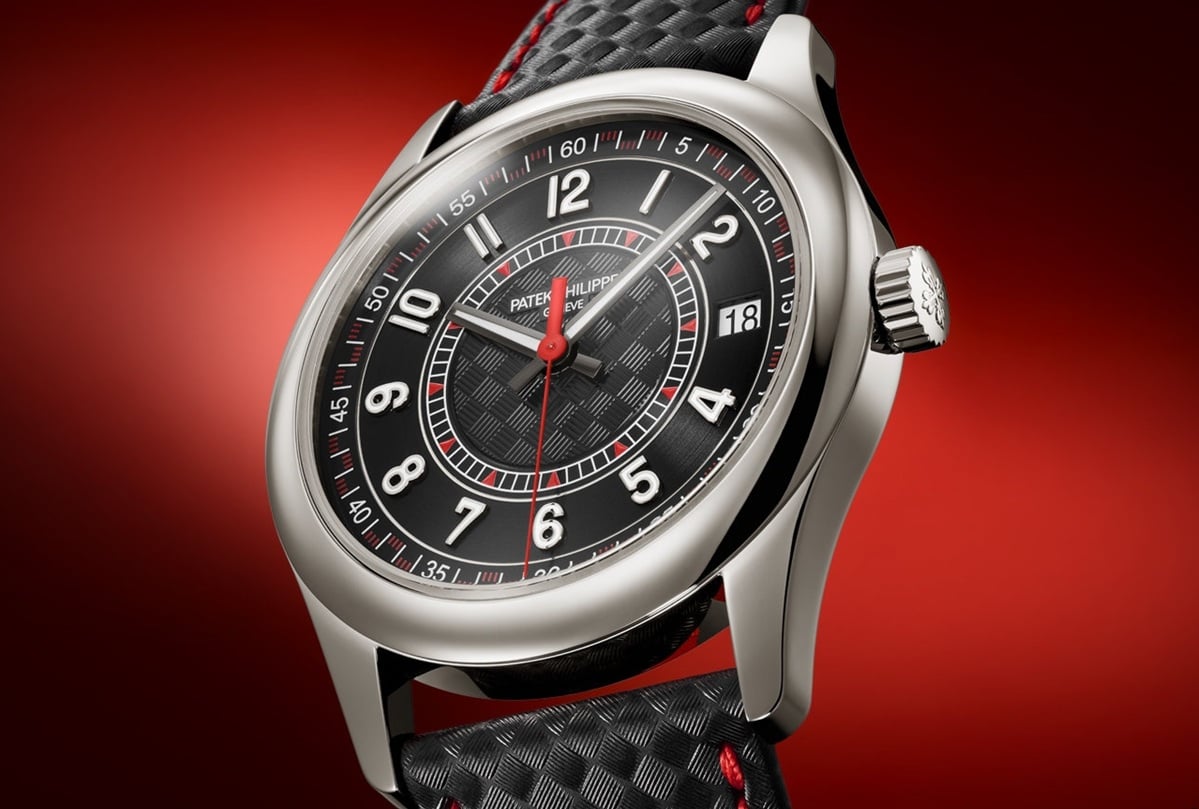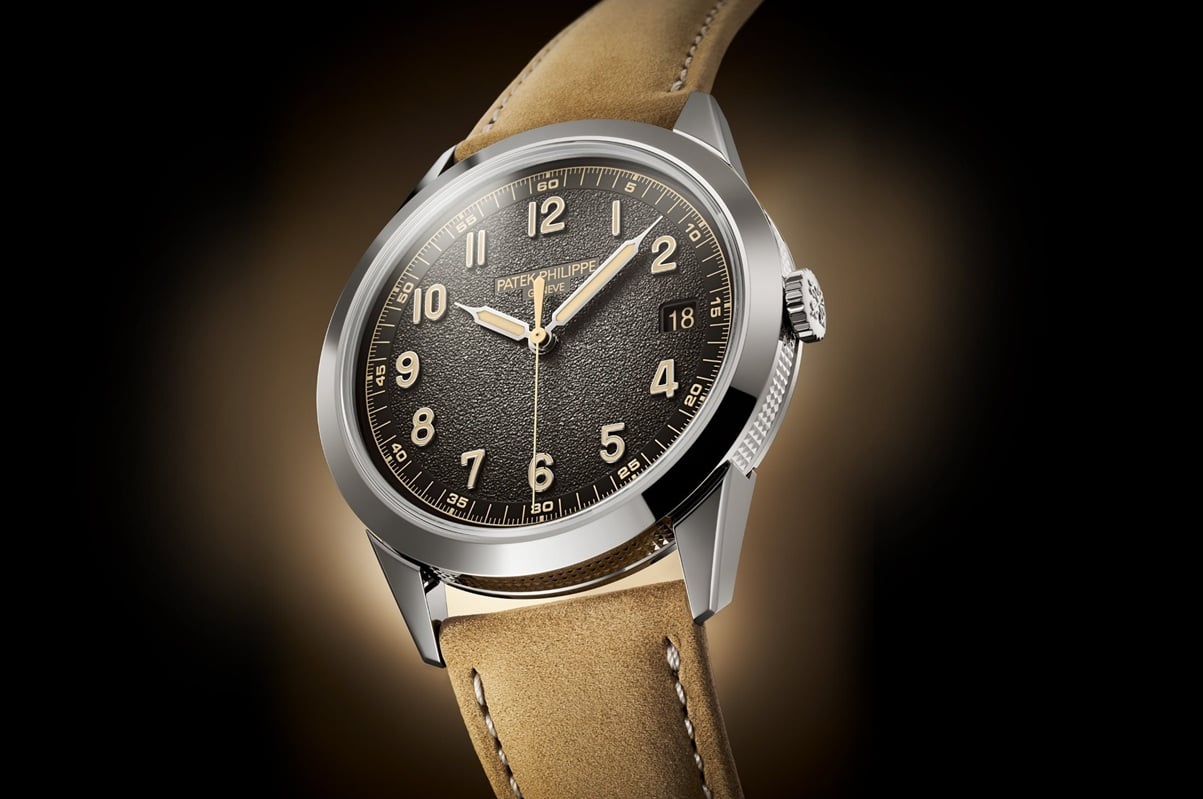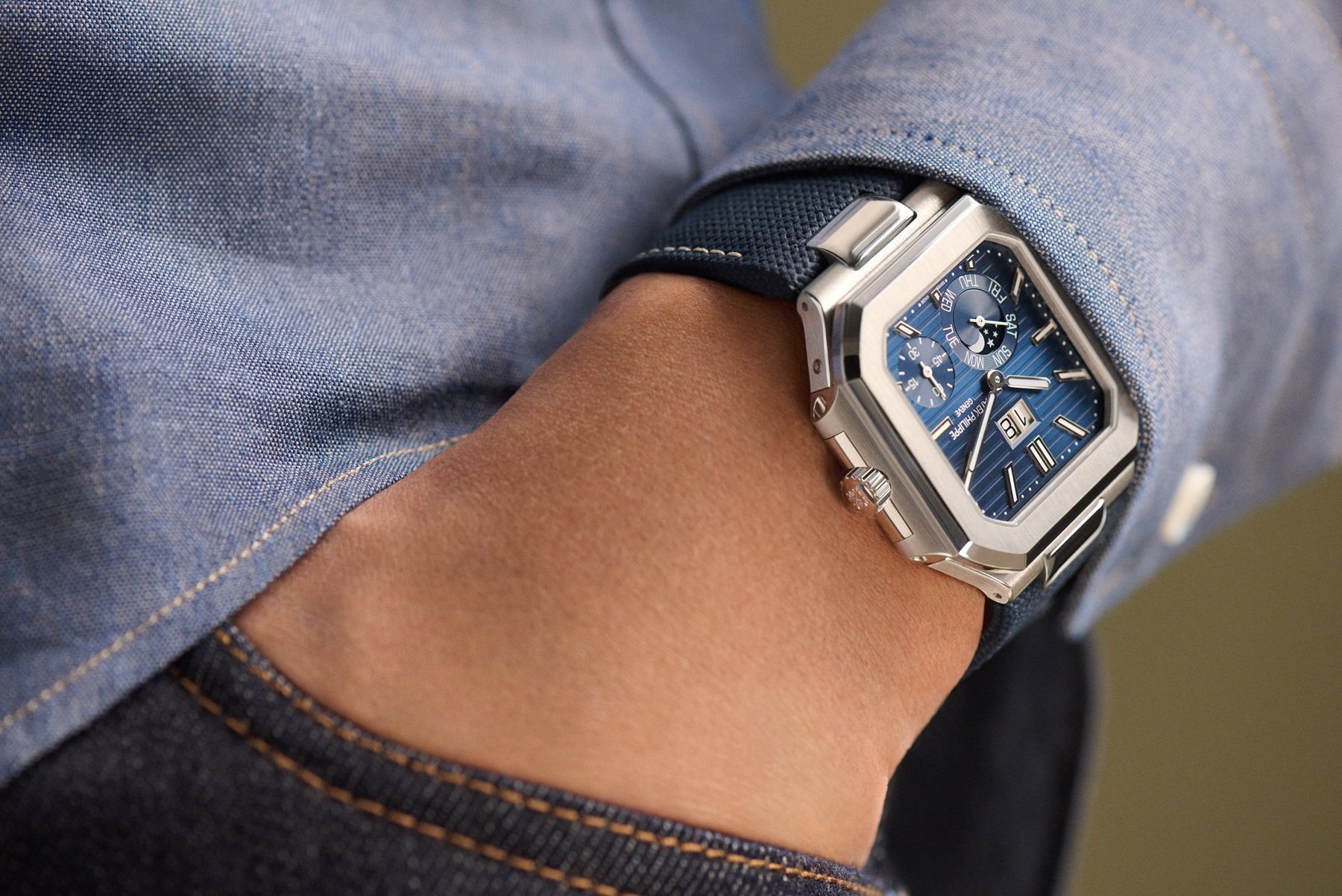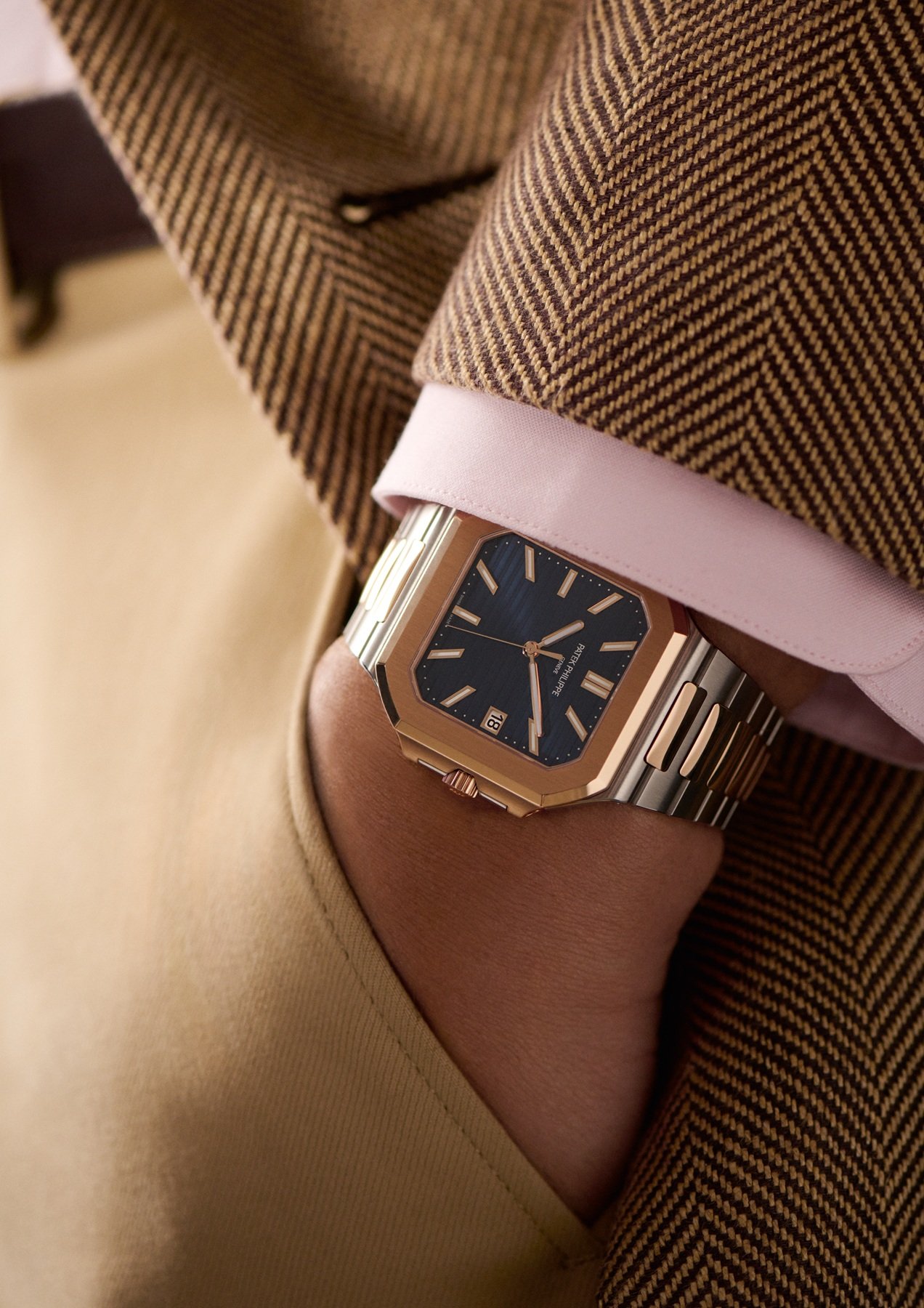Behind The Patek Philippe Cubitus
What do you do when you, as the owner of a watch company, have a thing for square watches? That’s correct: you create a square watch. That, in a nutshell, is the origin story behind the Patek Philippe Cubitus. The launch of the first all-new product line in 25 years was a significant moment not only in the brand’s history but also for Thierry Stern, who is both the owner and director of Patek Philippe, one of Switzerland’s four leading independent watch manufacturers. Let’s examine why the Cubitus is what it is and what it’s meant to do.
When Patek Philippe introduced the ref. 5711/1 to commemorate the 30th anniversary of the Nautilus in 2006, it was just another product launch. In a blue, underwater-themed space in the center of Geneva, the refs. 5712 and 5712/1 Moon Phase, midsize 5800/1, and 5980/1 Chronograph also debuted. As I said, it was just another watch launch — nothing more, nothing less. Imagine a Nautilus launch party in 2024, especially when you know the new reference was leaked online a few days before its official unveiling. The security measures would be extremely strict, almost as if the leader of the free world were going to visit. The Geneva police force would be on standby to prevent the eventual history-making “Nautilus Riots,” the first luxury-fueled uproar the world ever saw and the result of hype in furious overdrive. Can you imagine a new Gondolo reference creating mass hysteria, mayhem, and furor?
Behind the Patek Philippe Cubitus — Meet the “Gondolo Gang”
You’re wrong if you think hype is a unique, internet-fueled phenomenon. Let’s go back to November 12th, 1872, when Patek Philippe sent its first watch to the Brazilian retailer Gondolo & Labouriau. The watch sparked a furious passion for watches, especially in Gondolo & Labouriau’s home city of Rio de Janeiro. Everybody wanted a Patek, but in the late 19th century, timepieces from the Genevan manufacturer were costly, just like they are today. However, the original genius of Carlos Gondolo and Paulo Labouriau made it possible for more people to enjoy the craftsmanship and beauty of a Patek timepiece by introducing a clever purchasing system.
A total of 180 customers bought into the Plano de Club Patek Philippe System, and for 79 weeks, a lucky subscriber won a watch weekly. The remaining “Gondolo Gang” participants got their watches after paying in full. The system was a mix of a payment plan and a lottery, proving attractive and successful. Maybe “addictive” is a better word since gambling can be an addiction. The arrival of Patek Philippe timepieces ignited such passion, you could easily call it “hype,” especially when you know that F. Santini composed a “Patek waltz” in those days; clearly, it’s the 19th-century equivalent of the Lil Uzi Vert song “New Patek,” right? The “Gondolo Gang” behaved much like “Swifties” in those days. Instead of dressing up in T-shirts bearing the portrait of their admired artist, the “Gondolo Gang” wore Mexican sombreros with “Patek” on the upturned brim to a casual picnic for club members.
Fast-forward to 2006
Back to the Nautilus launch of 2006. After the ref. 5711 debuted, the internet didn’t blow up, and the Nautilus didn’t become a trending topic. Why? Simple. In 2006, social networks like Facebook and YouTube were still pretty much in the warm-up phase. There were no smartphones, just big and clumsy laptops. Also, Instagram only launched in 2010. Nevertheless, 2006 was the year we could see as the starting point of the internet we know today. In March 2006, Twitter debuted, and in September of the same year, Facebook announced its News Feed feature. Both Twitter and Facebook introduced the social media news feed to a mass audience. By doing so, both platforms had a big hand in changing how we interact and engage with other people, perceive news, and form our perspective of the world.
In 2010, Instagram also became part of a never-ending stream of content curated by constantly evolving algorithms. Nowadays, personalized content is curated so “well” that it keeps people scrolling endlessly, ensuring they see as many targeted ads as possible and other relevant content inside their bubble. In watch and luxury bubbles, the Nautilus 5711 is king.
Balancing the brand’s image and sales
The popularity of the ref. 5711 in steel reached the heavens because of social media. A rise in retail price did nothing to stop the watch’s allure. In fact, it only made the steel watch even more desirable and made Thierry Stern remove it from the collection. He didn’t want Patek Philippe to become the Nautilus brand. Upon the 5711’s discontinuation, prices skyrocketed on the secondary market. In July 2021, Antiquorum sold a double-sealed olive-green Nautilus for €416,000. The new full-steel Cubitus ref. 5821/1A-001 has a similar olive-green sunburst dial with a horizontally striped pattern. That’s not a coincidence, but more about that later on.
With the steel three-handed Nautilus gone, Patek needed another watch — another commercial king, so to speak. According to reports by Morgan Stanley, Patek Philippe builds and sells around 70,000 watches a year and has an annual sales revenue of CHF 2 billion — in an interview on SWI swissinfo.ch, Thierry Stern said, “The figure of two billion is flattering, but I can tell you we’re really not at that level.” The sporty yet elegant segment of the brand, consisting of the remaining Nautilus models, the Aquanaut, and the three new Cubitus references that mark the start of that new product family, accounts for a maximum of 40% of Patek’s sales. That means that if we take CHF 1.8 billion in sales revenue for 2025 and calculate 40% of that, the three lines of luxury sports watches will create an annual sales revenue of CHF 720 million.
A historically important commercial entity
Watch enthusiasts sometimes might forget that Patek Philippe is not just an iconic manufacturer of prestigious timepieces. The brand with a dedicated museum — the world’s most important watch museum — has a proud and prominent place in watch history, but it is also a commercial entity that needs to make money to continue to do business. The steel Nautilus 5711 was the commercial golden boy that became too popular for its own good. The decision to axe it was understandable from an image point of view but risky commercially. Something commercial had to take its place to make up for the income. But what?
Big shoes to fill
How would Patek fill the void the 5711 left behind? Sporty, round Calatrava models were not the answer. Neither was a new set of Gondolo references, although the Gondolo collection, officially launched in the early 1990s and inspired by vintage Patek watches, has a place in this story. That’s not just due to the hype it created in the 19th century but also because of the nature of the Gondolo collection. And since Thierry Stern has always been a fan of non-round, more exotically shaped watches, this collection has always been dear to him. Enter the Gondolo “Cabriolet” ref. 5099, which debuted in 2000, and the Gondolo Calendario ref. 5135 from 2004.
The Gondolo “Cabriolet” ref. 5099 is a very peculiar watch with an extremely complicated square case. It is inspired by an exuberant Art Deco timepiece from the 1920s, of which Case No. 606 797 is on display in Geneva at the Patek Philippe Museum. The ref. 5099 is a 26 × 26mm secret watch with a hinged cover mechanism, which led to the nickname “Cabriolet.” The watch’s cover opens with two push buttons on the sides of the 52-part case that took three years to develop. The “Cabriolet,” which housed the hand-wound caliber 215 PS, wasn’t a big success. Still, as I learned during an appointment at Patek’s Genevan headquarters to see the new Cubitus collection in the metal, it holds a special place in Thierry Stern’s heart.
Sales drivers
The same goes for the Gondolo Calendario ref. 5135, which has an annual calendar and a moonphase display. But before getting into the shape and size of the watch, the annual calendar complication deserves a mention because it is an interesting function in many ways. Patek Philippe invented and introduced the annual calendar in 1996 because the brand needed to sell more watches. Perpetual calendars are much more complicated and, therefore, more costly than a calendar watch that “only” manages to advance the month, day, and date automatically and requires a manual correction once a year on March 1st.
Despite being less complicated, the look of an annual calendar is not much different than that of a perpetual one. Some of Patek’s purist clients voiced their dislike and complained about the simplification that would harm the brand’s image. But the complication did attract a new audience, it sold, and now it is a staple in the Patek lineup.
By the way, the Aquanaut was also introduced to revive the sporty side of the brand. In 1996, the Nautilus turned 20, and Patek decided to introduce a celebratory watch, the ref. 5060J, which was, in essence, a dressier version of the Nautilus ref. 3800. The 36mm case diameter remained, but the characteristic side hinges or “ears” were removed, and instead of an integrated bracelet, the watch had lugs to fit a traditional leather strap. The watch was presented as a special Nautilus variant, but aesthetically, it is the predecessor of the 1997 casual-sporty Aquanaut ref. 5060. Again, it took some time for the public to warm up to the new creation, but as time passed and the bigger ref. 5065 debuted as a replacement, it happened, and the Aquanaut is still going strong in 2024.
Do you remember the Neptune?
The same is not true for another sporty-elegant watch that came out in 1996, the Neptune. When it debuted, it did so with the tagline “Ideal for sportswear, the supremely elegant Neptune is, at the same time, the perfect dress watch.” The Neptune’s moderately sized 36.5mm case, classic dial, and elegant leaf hands represented the watch’s dressy aspect. The water resistance to 30 meters, crown protectors, and the prominent engine-turned bezel accentuated its sporty character. The Neptune references that came out never became an alternative to the gents’ or ladies’ Nautilus models. After a rather slow start, the Aquanaut also performed much better, so by 2005, the Neptune collection was discontinued.
Back to the Gondolo
Let’s return to the Gondolo Calendario ref. 5135 with its annual calendar and moonphase display. When it came out in 2004, Thierry Stern started wearing it, although novelties are not supposed to be on the wrists of the brand’s employees so as not to upset clients who can’t have what they see. His love for non-round watches must have gotten the better of him, and he continued wearing the relatively large tonneau-shaped watch for a long time.
Other Gondolo references worth a look at are the 5010 and 5124. The rectangular and elegant ref. 5010 fully embraces Art Deco with a 1930s dial layout and comes in a 26 × 29mm case. This petite, charming Gondolo is an understated style statement par excellence. The Gondolo ref. 5124 is a much bolder watch — maybe not because of its 33 × 42mm dimensions but, rather, its pronounced shapes. The edges of the rectangular Gondolo 5124 show a striking secondary step that creates a smooth transition from the flanks to a subtly curved sapphire. With a little imagination, you can see similarities between this Gondolo model’s flanks and the “ears” of the Nautilus. And it’s not just the Art Deco-inspired case, which draws inspiration from skyscrapers, automobiles, and ocean liners of the time, that makes the 5124 so interesting.
The Gondolo ref. 5124 also boasts the shaped hand-winding caliber 25-21 REC PS, which has technical and design roots dating back to the early 20th-century calibers of Gondolo pocket watches. This creates a perfect story — a shaped history-inspired watch with a shaped movement with a long historical background.
No Gondolo for men
The Gondolo references I mentioned might have given you an appetite for them. I’m sorry to say that, despite Thierry Stern’s love for non-round watches, Patek’s current collection does not include a single Gondolo aimed at men. So why didn’t a square men’s Gondolo debut on October 17th, 2024, but the Cubitus instead? It’s because the Gondolo is too formal to be a big hit in an increasingly informal world. Even sportier and more casual Calatrava models, such as the three colorful ref. 6007G variants or the pilot’s-watch-inspired ref. 5226G with the hobnail pattern on the case band, don’t cut it. Yes, these watches are certainly not like a classic Patek, but they also lack the one-of-a-kind presence of the Nautilus.
Just like the Cubitus, both Calatrava models did meet criticism. However, the objections and reactions to these Calatrava references were nothing compared to the storm of negativity that broke when the Cubitus collection was revealed this past October. Why was that? It comes down to many factors, some more tangible than others. The least tangible is the overall sentiment in the world today, and the most tangible is that the Cubitus shows many similarities with the coveted Nautilus.
Patek explains that the Cubitus collection’s mission is “to offer a new reinterpretation of the ‘elegant, sporty’ style” through a design in which the square bezel adopts rounded corners, “blending the square, the circle, and the octagon.” It also has another task to perform.
Creating a money-maker
The 2024 steel and pink gold Cubitus ref. 5821/1AR-001 with a blue sunburst dial, the all-steel ref. 5821/1A-001 with an olive-green sunburst dial, and the exclusive platinum ref. 5822P with its instantaneous grand date, day, and moonphase indications are intended to be money-makers, just like the 1976 and 2006 Nautilus references and the 1997 Aquanaut. Simply put, to create grand complications like the In-Line Perpetual Calendar ref. 5236 and maintain the status of the most prestigious watchmaker in the world, Patek Philippe needs to sell commercial, friendlier-priced watches that tap into contemporary tastes and trends. And the new Cubitus does just that: it sells. Will it become an icon like the Nautilus, or will its Nautilus-derivative design make it go the way of the dodo…sorry, the Neptune?
The Genta roots
The Cubitus probably won’t follow in the Neptune’s footsteps because, just like the Aquanaut, it still shows the root of the timeless Genta aesthetic introduced in 1976 with the Nautilus ref. 3700. And that Genta aesthetic has become an iconic symbol of prestige and luxury. Some, including me, think the Cubitus stays too close to its Genta roots. Despite the obvious and bold geometrical changes we see in the Cubitus, the Aquanaut, with its “hand grenade” dial, rounded shapes, lugs, and rubber strap, strays further from the Nautilus origins and thus displays more original character. Will this stop the Cubitus from being a commercial success? It most certainly won’t because the likeness to the Nautilus is its key to success. Unlike any round Patek, the Cubitus instantly says “Patek” in a design language the target audience immediately understands.
Nevertheless, it is tempting to see the Cubitus as a transitional collection that bridges a period in which the steel Nautilus is waiting in the shadows, only to come out in all its charismatic glory for its 50th anniversary in 2026. But because Thierry Stern is fond of square watches and this is the first new product line introduced under his reign, the Cubitus will most likely be in the catalog and on his wrist for years to come.
With the Nautilus’s 50th anniversary less than two years away, preparations for new references and a launch party must be underway as you read this. How will Patek celebrate half a century of what has become a symbol of high luxury? One thing is certain: it will be the watch launch of the century, not just another Nautilus launch like in 2006.

